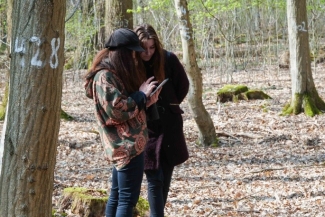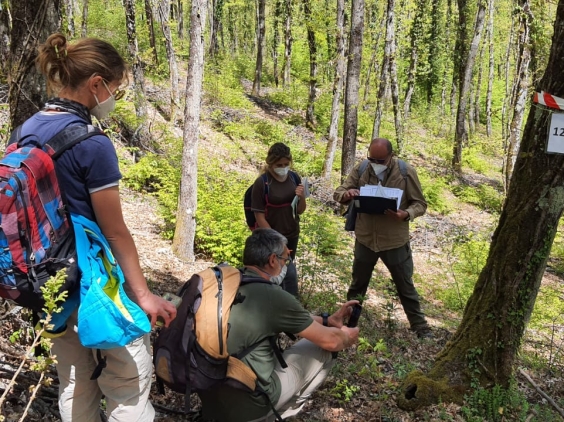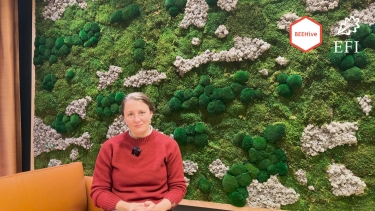Using Marteloscopes to analyze public’s perceptions on forests

When having a walk in the forest to recreate: what forest types do you prefer and what scenery do you like most? Do you like conifer trees or for instance oaks and beech – or a mixture between both? What would you imagine when you think of an attractive forest, and what is the opposite to that? The answers to these questions are probably connected to many factors: what is your age, your profession, and where do you live? Do you recognize any tree or plant when taking a break in the forest, maybe even observing birds or other animals? And have you ever been in touch with forestry – or are you maybe rather puzzled about why and how forests are managed?
In EFI’s new research project Martelkom (Marteloscopes as research and communication tools for integrated forest management) we want to explore exactly these questions – perceptions and preferences connected to forests and forestry by different societal groups. Our aim is also to investigate how values, knowledge and attitudes are connected to types of forest characteristics, and if these change for instance through learning about forestry. By doing so, the project wants to support the often challenging communication between forestry actors and the wider public. And specifically, we would like to focus on the opportunities and challenges related to integrated forest management, which aims to integrate different forest functions (e.g. wood production and biodiversity conservation).
But what does this have to do with Marteloscopes? Marteloscopes are fully inventoried practice sites for forest management and have in the past been used e.g. for tutorial exercises with forest managers or policy makers to enable a discussion of management goals. For achieving these goals, the economic and ecological value of a forest stand as well as potential impacts of silvicultural measures have to be considered. The exercises are implemented with a tablet application including all inventorying data for each site. However, Marteloscope sites are not only interesting for forest managers and policy makers, but also interesting tools for qualitative research in the social sciences. In Martelkom, we will therefore implement research experiments with different societal groups who participate in Marteloscope exercises. Our aim is to understand attitudes of the participants towards forests and forestry and whether attitudes change due to the learning experience about forest management options in Marteloscope exercises.
EFI has worked on establishing Marteloscope sites for 20 years. Across Europe, around 200 Marteloscope sites exist already – with increasing numbers, as new sites are established continuously. These sites are collected under the umbrella of the Integrate Network, which was launched as a member state driven initiative under the EU Forest Strategy in 2017. Today, the network consists of 19 member countries including actors from policy and practice with EFI as secretariat.
By the end of the Martelkom project, our aim is to extend the Marteloscope application by a new parameter: the recreation parameter, a so-called “citizen tool”. Furthermore, we will develop communication recommendations to improve public relations in forestry. Insights from the project will be shared continuously on social media, EFI’s Resilience blog and through short videos that we will produce. Our project partner is the Forstliche Versuchs- und Forschungsanstalt Baden-Württemberg (FVA). Additionally, we collaborate with regional forestry offices in Arnsberg, Bonn and Freiburg. But for now, we start off with the Martelkom Kick-off meeting held on November 29/30 in Freiburg.
The project is funded by the Federal Ministry of Food and Agriculture within the framework of the "Förderprogramm Nachwachsende Rohstoffe" under the funding code 2220NR235A.



